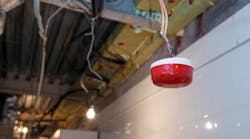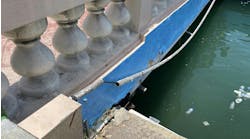Part III of Art. 760 of the National Electrical Code (NEC) provides the requirements for power-limited fire alarm (PLFA) circuits. The power sources must be one of three types (all listed) [760.121(A)]:
- PLFA or Class 3 transformer.
- PLFA or Class 3 power supply.
- Equipment marked to identify the PLFA power source.
Other highlights include:
- The branch circuit supplying the fire alarm equipment can’t supply other loads [760.121(B)].
- Conductors and equipment on the supply side of the PLFA power source must be installed per the appropriate requirements of Part II of 760 and of Chapters 1 through 4 [760.127].
- On the load side of the PLFA power source, use wiring methods and materials that comply with 760.130.
- PLFA cables installed in buildings must comply with 760.135(A) through (J). Most of the requirements are location specific. For example, risers in vertical runs must be Type FPLP or FPLR cable [760.135(D)(1)].
- You must keep PLFA conductors separate from other kinds of conductors using the methods described in 760.136(A) through (G).
- You can use the cable substitutions provided in 760.154(A).




